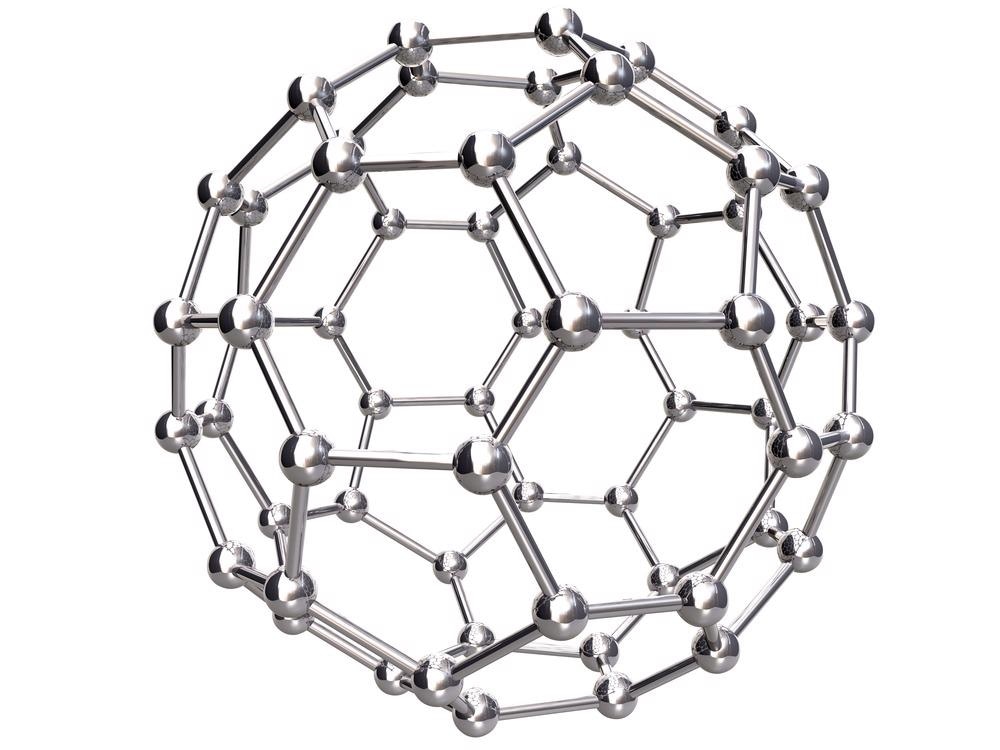In a study published in the journal Materials Today Communications, density functional theory (DFT) was used in a novel effort to investigate the adsorption of fluoroquinolone (FQ) on magnesium-, calcium-, iron-, and zinc-loaded fullerenes. The study's results suggested that calcium-loaded fullerene might be a promising choice for nanoscale biosensor technologies.

Study: Enhanced Adsorption of Fluoroquinolone Antibiotic on the Surface of the Mg-, Ca-, Fe- and Zn-doped C60 Fullerenes: DFT and TD-DFT Approach. Image Credit: ogwen/Shutterstock.com
Environmental Impacts of Fluoroquinolone Antibiotics
Fluoroquinolone (FQ) antibiotics are medications utilized in animal and human treatment that help cure infections caused by bacteria. As fluoroquinolone antibiotics cannot be completely digested by people or animals and are not readily utilized by many microbes, they seep into the ground through uncontrolled effluent disposal channels and are subsequently absorbed by the soil.
Since the prevalence of FQ in the ecosystem continues to pose a substantial concern to animal and human health, it may pose a significant threat to soil-based ecosystems and water supplies. Adequate strategies for separating FQs from polluted environments are urgently needed.
C60 Fullerene – The Adsorbent of Choice
Due to their strong surface potential, excellent adsorptive capabilities, and minimal toxic effects, carbonaceous nanostructures such as fullerenes, carbon nanotubes, and high porosity carbons are considered suitable adsorbent materials.
Among said nanostructures, C60 fullerenes have been employed for enhanced sewage treatments and have significant antibacterial effects. Due to its uniquely particular architecture and features, C60 fullerene has brought about new opportunities in biomedicine research, and its application has grown fast.
Functionalized C60 fullerenes are appealing due to their great chemical robustness and durability, outstanding biocompatibility, and considerable anti-cancerous effects.
This intrigues the scientists focusing their efforts on functionalized fullerene research as the absorptive capacity and chemical responsiveness of functional fullerenes may be improved, allowing them to engage more effectively with the target structures.
Replacement or doping operations on C60 fullerene may cause localized alterations within the loaded fullerene network, modifying the compositional and electrical characteristics for better absorbance and, as a result, a superior sensory material for detecting antibiotics. This blend of C60 fullerenes permits them to engage with numerous other medication ingredients through (non)covalent connections.
Goals of the Study
The unique feature of this study was to analyze functional C60 fullerenes with magnesium, calcium, iron, and zinc dopants and develop a biosensor built on functional C60 fullerenes for highly sensitive identification of FQ antibiotic medications as a unique carbonaceous adsorbent.
The primary goal of the research was to analytically evaluate the capability of magnesium-, calcium-, iron-, and zinc-loaded C60 fullerenes as nanoscale biosensors for adsorption of the FQ antibiotics.
The adsorbing energy (Ead), binding energy (Eb) per atom, high frontier orbital gap (Eg), vertical ionizing potential (VIP), density of states (DOS), overall reactivity describers (such as electrophilic nature, hardness), vertical electron affinity (VEA), as well as ultraviolet–visible spectra were documented to gain a thorough understanding of the types of engagement of FQ with raw and loaded fullerenes.
The reduced gradients of density (RDG), non-covalent interactions (NCI), Wiberg bond index (WBI), Mayer and Fuzzy bond orders (MBO, FBO), and Mulliken charge were investigated to assess the nature of bonds in potential engagements among fluoroquinolone and functionalized C60 fullerenes.
Important Findings of the Research
Density functional theory and time-dependent density-functional theory were used to study the absorbance of fluoroquinolone on raw C60 fullerenes as well as magnesium-, calcium-, iron-, and zinc-loaded C60 fullerenes. The replacement or loading of magnesium, calcium, iron, and zinc atoms dramatically increased the responsiveness.
The bandgap energy revealed that the electrical conductivity of functionalized C60 fullerenes influenced the adsorption of fluoroquinolone on doped C60 fullerenes. Fluoroquinolone adsorption lowered the bandgap energies from 2.06 eV down to 1.43 eV, allowing electrical impulses to be created thanks to improved conductance.
Analysis of the ultraviolet-visible and RDG absorbance spectrum was also carried out to establish the intensity and type of the engagements among the fluoroquinolone and functionalized C60 fullerenes. The ultraviolet-visible spectra of calcium-enriched C60 fullerene moved to red slightly during adsorption, and its adsorbing energy achieved its maximum value.
This research showed that doping fullerene–based detectors with calcium improves their responsiveness dramatically. As a result of its improved energetic and electrical characteristics with the FQ, Ca-enriched C60 fullerene may be the superior nanoscale biosensor for FQ.
Reference
Muz, İ. (2022). Enhanced Adsorption of Fluoroquinolone Antibiotic on the Surface of the Mg-, Ca-, Fe- and Zn-doped C60 Fullerenes: DFT and TD-DFT Approach. Materials Today Communications. Available at: https://doi.org/10.1016/j.mtcomm.2022.103798
Disclaimer: The views expressed here are those of the author expressed in their private capacity and do not necessarily represent the views of AZoM.com Limited T/A AZoNetwork the owner and operator of this website. This disclaimer forms part of the Terms and conditions of use of this website.